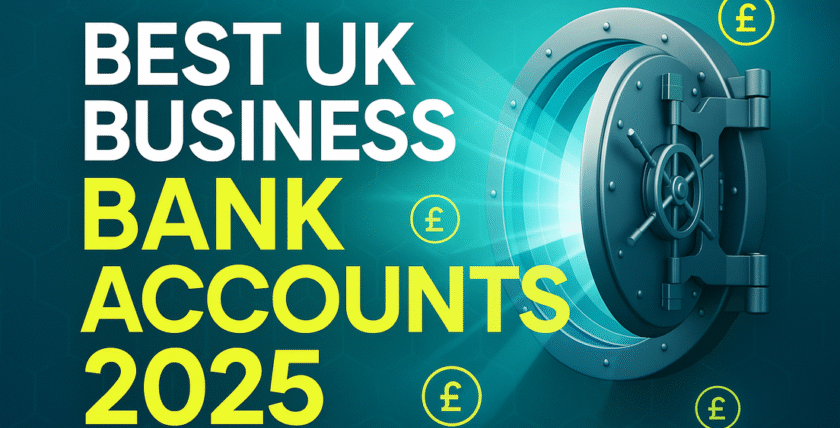Best High-Interest Savings Accounts in the UK (2025 Update) – Saving means more than tucking cash away—it’s about finding accounts that offer high interest, flexibility, and security. In 2025, UK savers are spoilt for choice, with rates rising in many easy-access, fixed-term, and notice savings accounts. Here’s your guide to picking the right one, what banks offer, and how to make your money work harder.
What to Look for in a High-Interest Savings Account
Before jumping in, check for these key features:
| Feature | Why It Matters |
|---|---|
| AER (Annual Equivalent Rate) | The true interest rate you’ll earn over a year includes compounding. |
| Access flexibility | Easy access vs fixed term vs notice accounts. The more restricted, usually the higher the rate. |
| FSCS protection | Up to £85,000 per institution: ensures your money is safe. |
| Minimum/maximum deposit limits | Some good rates only apply up to a certain balance. |
| Withdrawal restrictions/penalties | Notice accounts or some fixed-term accounts restrict access; fixed savers may penalise early withdrawals. |
| Bonus periods or promotional rates | Some banks offer elevated rates for new customers or with conditions. |
Top UK Banks & Challenger Providers: Current Offers
Below are some top deals as of mid-2025 from both high street and challenger banks. Rates and conditions change frequently, so always double-check directly before opening.
| Provider | Type of Account | Example Rate (AER) | Key Details / Conditions |
|---|---|---|---|
| Monzo | Instant Access Savings Pot / Cash ISA | ~ 3.50%-3.85% (variable), rising to ~4.10% in some fixed savings pots. | No minimum deposit for Instant Access; FSCS protected. Interest paid monthly. Some plans (Plus / Premium / Perks) offer better rates. |
| Starling Bank | 1-Year Fixed Saver / Easy Saver | ~ 5.25% AER for 1-year fixed saver; ~ 4.00% on easy-access savings in some offerings. | Fixed saver means funds locked for 1 year; easy access versions are more flexible but possibly offer lower rates. FSCS protected. |
| Atom Bank | Instant Access Reward | 4.75% up to certain balances (e.g. up to £100,000) | Be careful: withdrawing in a month might reduce the rate. Some restrictions apply. |
| Chase UK | Easy Access Saver / Instant Access | Up to about 5.00% AER in some promotional or bonus offers. | These high rates often come with conditions (new customers, limited time, deposit caps or withdrawal rules). |
| HSBC | 1-Year Fixed Rate Saver | ~ 5.70% AER (fixed) in some special offers. | Fixed rate means you agree to leave savings untouched for the year. Usually, there is a minimum deposit. |
| NS&I | Guaranteed Growth Bond | ~ 6.20% AER (1-year) for certain deposit ranges. | Government-run, very safe. However, conditions usually include limited withdrawals and specific deposit thresholds. |
Challenger Banks vs Traditional Lenders
Challenger banks (like Monzo, Starling, and Atom) have pushed savings rates higher in recent years. They often offer:
-
More attractive, easy-access or digital “pots/spaces” for savings.
-
Competitive fixed-term deals via app interfaces.
-
Flexible access, though sometimes with trade-offs (withdrawal penalties, rate tiers).
High street/traditional banks often lag in these rates but may win on stability, customer support, branch access, or familiarity.
Pros & Cons of Different Types of Savings Accounts
| Account Type | Pros | Cons |
|---|---|---|
| Easy-Access / Instant Access | Highest flexibility (withdraw when needed), good for emergency funds. | Rates are often lower than locked / notice accounts; rates may change at any time. |
| Fixed-Term / Fixed Rate Bonds | Higher interest; predictable income. | Money is locked for a period, with early withdrawal penalties; interest might be taxed; inflation risk. |
| Notice Accounts | Middle ground: some flexibility but higher rates than easy access. | Must give notice before withdrawing; may lose interest if not complying. |
| Cash ISAs | Interest is tax-free; good option if you’re already using ISA allowances. | Rate might be slightly lower; limits on contribution; some ISAs are not flexible. |
Things to Watch Out For
-
Inflation: If inflation is higher than your savings rate, your real return (purchasing power) may still decline.
-
Rate reductions: Many banks offer high rates temporarily or to new customers. Keep an eye on “intro rates” or “promotional bonus periods.”
-
Tax implications: Cash ISA → interest is tax-free; non-ISA accounts may attract tax on interest above personal allowances.
-
FSCS protection: Always check if the bank is covered; coverage is generally up to £85,000 per person, per institution.
Comparison Table: What You Can Expect
Here’s a summary of some competitive savings accounts in the UK as of 2025:
| Account | Type | AER / Rate | Access / Lock-in | Min/Max Deposit | Notes |
|---|---|---|---|---|---|
| Monzo Instant Access / Pot | Easy / Instant Access | ~ 3.50-4.10% (variable) | Withdraw anytime | No minimum (up to limit) | Better rates for subscriber plans, FSCS protected. |
| Starling 1-Year Fixed Saver | Fixed Term | ~ 5.25% AER | Locked 1 year | Minimum transfer from the Starling main account | High rate but inflexible during the term. |
| Atom Bank Instant Saver Reward | Easy-Access | 4.75% | Immediate access, but penalties if withdrawn often | Limit of around £100,000 for the rate | Great rate if you can keep funds stable. |
| HSBC 1-Year Fixed Rate Saver | Fixed | 5.70% | Locked for 12 months | Minimum deposit required | Strong fixed-rate option. |
| NS&I Guaranteed Growth Bond | Fixed / Government Bond | 6.20% (1 year) | Locked / limited access | Specific deposit range | Very safe option. |
Best Strategy for Savers in 2025
-
Split your savings by purpose. Keep emergency funds in easy access, use notice or fixed for money you won’t need immediately.
-
Watch for rate changes—especially when “intro offers” expire. Set alerts or check comparison sites regularly.
-
Use ISAs when possible, especially if you’re a higher-rate taxpayer. Even small tax savings matter over time.
-
Don’t get lulled by high headline rates—always read the fine print (withdrawal fees, caps, eligibility).
-
Diversify across institutions—ensures FSCS protection, and helps if one bank cuts its rate.
Also See:


